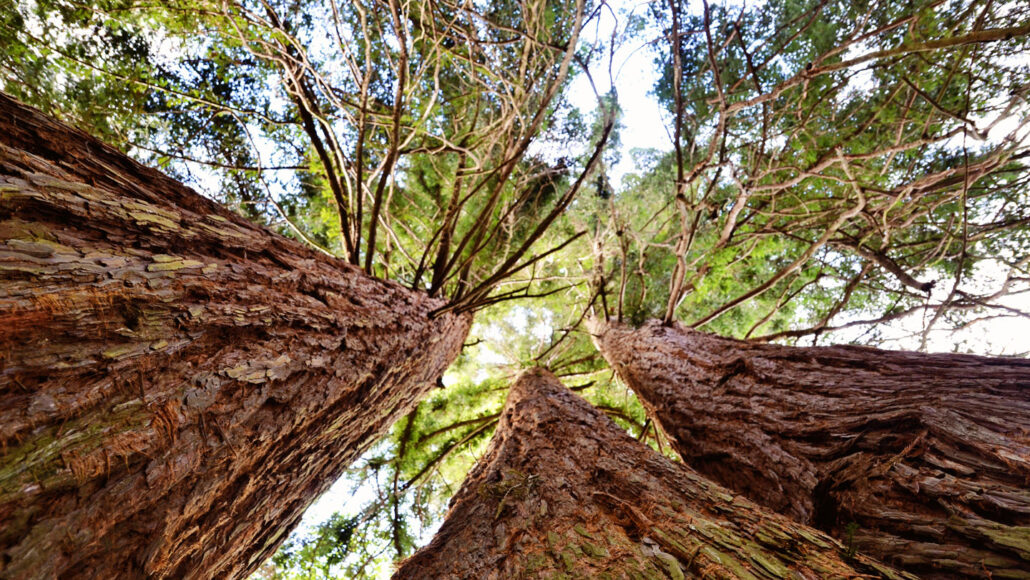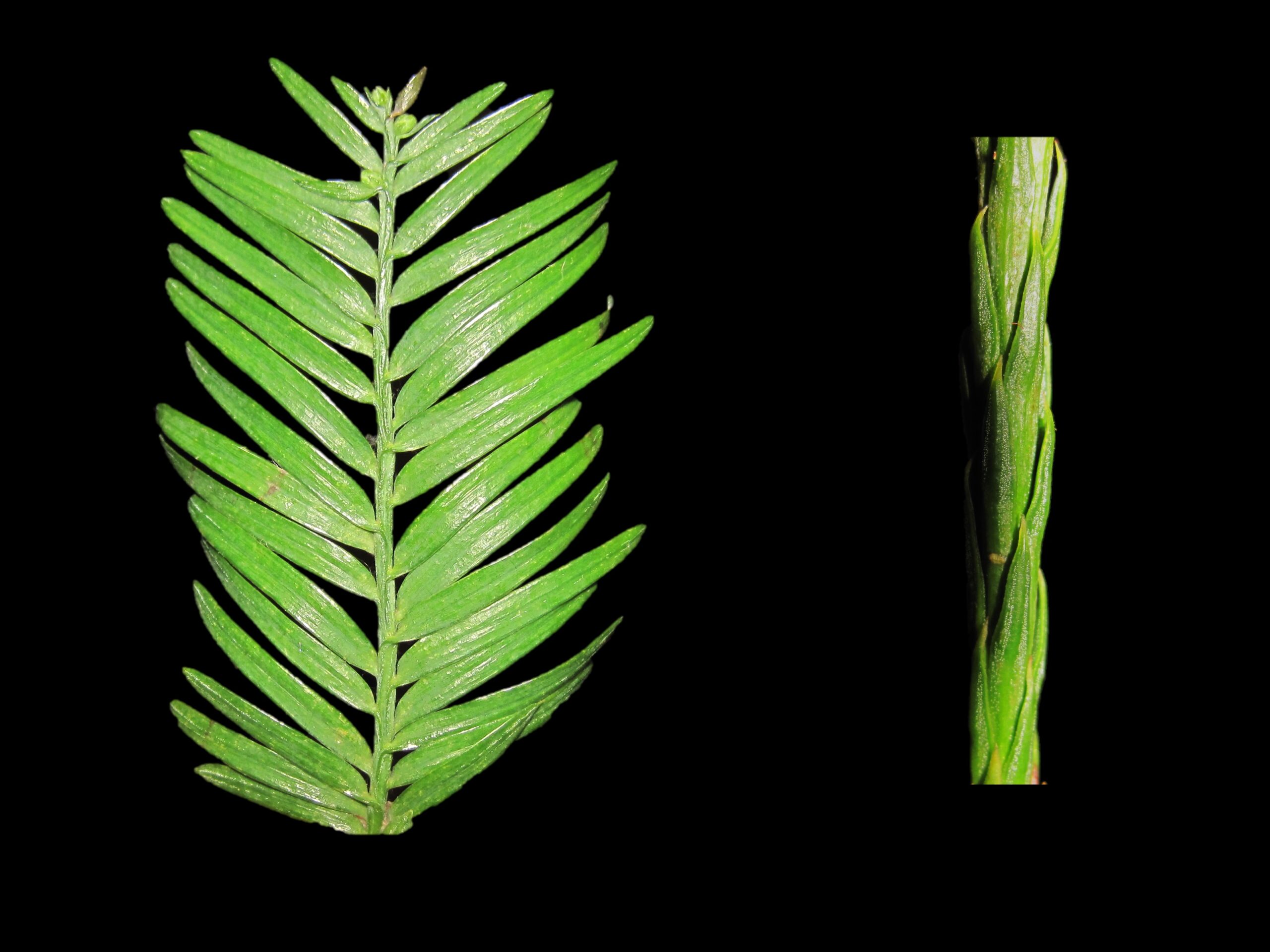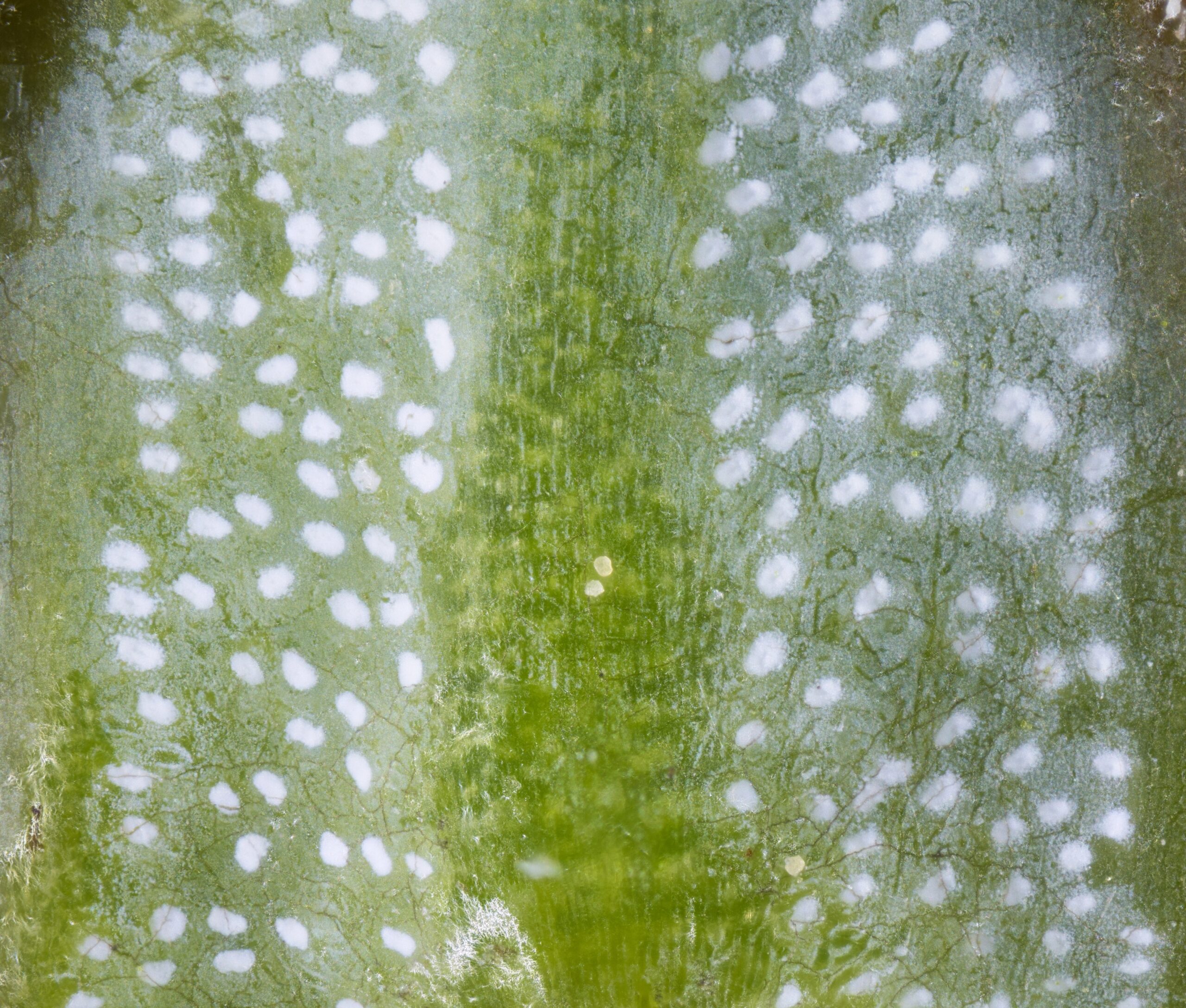Some redwood leaves make food while others drink water
Where each type grows on the tree varies with climate

A view from the forest floor into a redwood canopy. These trees are some of the tallest, oldest and most resilient on Earth.
Natalia Crespo/Moment/Getty Images Plus
Redwoods are some of the world’s oldest, tallest and most resilient trees. They’re aided by fire-resistant bark and pest-resistant leaves. Plant researchers have now discovered something else that may help these trees deal with Earth’s changing climate. They have two different types of leaves — and each focuses on doing a different job.
One type converts carbon dioxide into sugar through photosynthesis. This makes the tree’s food. The other leaves specialize in absorbing water, to slake a tree’s thirst.
“It’s completely mind-blowing that redwoods have two types of leaves,” says Alana Chin. She is a plant scientist at the University of California, Davis. Despite redwoods being such a well-studied tree, “We did not know this,” she says.
Chin and her colleagues shared their discovery March 11 in the American Journal of Botany.
Their new finding may help explain how these redwoods (Sequoia sempervirens) have proven so good at surviving at sites that can range from very wet to quite dry. The discovery also suggests redwoods may be able to adapt as their climate changes.
Telling the two types of leaves apart
Chin and her team stumbled upon the leafy surprise while examining bunches of leaves and shoots they had collected from six different redwood trees in different parts of California. They were looking to learn more about how these trees absorb water. Some were in a wet area, others in a dry region. Some leaves came from the bottom of a tree, others from various heights up to the treetops — which could be as much as 102 meters (about 335 feet) above the ground. In total, the team looked at more than 6,000 leaves.
Back in the lab, the researchers misted freshly cut leaves with fog. By weighing them before and after fogging, they could see how much moisture the greenery absorbed. They also measured how much each leaf could photosynthesize. The researchers even cut up the leaves and looked at them under a microscope.
They expected all the leaves to look and respond more or less the same way. But they didn’t.
Some leaves absorbed a lot of water. They were more curled. They seemed to wrap around the stem, almost as if they were hugging it. The outside of these leaves lacked a waxy, water-repellent coating. And their insides were full of water-storing tissue.
What’s more, some of the important photosynthetic structures in these leaves appeared to be messed up. For example, the tubes by which leaves send newly made sugar into the rest of the plant were plugged up and smashed-looking. Chin’s team decided to call these leaves “axial” ones because they are closer to the woody stem — or axis — of the branch.

The other type of leaves had more surface holes, known as stomata. These pores allow leaves to breathe in carbon dioxide (CO2) during photosynthesis and to exhale oxygen. Chin’s team now refers to these as peripheral (Pur-IF-er-ul) leaves, because they stick out from the edges of the branch. They unfurl out from the stem to catch more light. These leaves contained efficient sugar-moving tubes and had a thick, waxy “raincoat” over their surface. All of that suggests these leaves should be able to carry out photosynthesis even in wet climates.
Most plants use one leaf type to both photosynthesize and absorb water. So it’s a surprise, Chin says, that these trees have a distinct leaf type that seems designed for drinking. A redwood still hosts many more food-making leaves than drinking leaves. By the numbers, more than 90 percent of a redwood’s leaves are the sugar-making type.
Finding some super-slurper leaves in redwood trees “inspires us to look at leaves differently,” says Emily Burns. She’s a biologist at Sky Island Alliance. That’s a biodiversity group based in Tucson, Ariz. Burns did not take part in the new study, but she studies coastal redwoods and how they are impacted by fog. The new data, she says, reinforce that leaves can be “so much more than just photosynthesis machines.”
The study also shows one reason why some plants have two different types of leaves or flowers. That pattern is called dimorphism. For the redwoods, it seems to help them adapt to varied climates. “This study reveals an underappreciated feature of shoot dimorphism,” Burns says.
Different leaves for more adaptability
All of the redwood leaves drank in some water. The axial leaves were just much better at it. They could absorb three times more water than peripheral leaves, Chin’s team found. A large redwood can actually drink up to 53 liters (14 gallons) of water per hour through its leaves. That’s helped by having lots of leaves — sometimes more than 100 million per tree.
Roots also drink in water. But to move that moisture to its leaves, Chin notes, a tree must pump water a long way up against the pull of gravity. A redwood’s specialized water-slurping leaves “is a kind of sneaky way plants use to be able to get water without having to get it out of the soil,” she explains. She expects most trees probably do this to some degree. But there isn’t enough research on this, she says, so it’s hard to know how redwoods compare.

Where on the tree the super-drinker leaves grow varies with the climate, the team found. In wet areas, redwoods sprout these leaves near the bottom. That allows them to collect extra rainwater as it trickles down from above. Putting more photosynthesizing leaves near the treetop helps them tap the most sunlight.
Redwoods growing in dry sites distribute these leaves differently. Since there isn’t much moisture here, the tree puts more of its water-absorbing leaves up high to catch all the fog and rain it can. With fewer clouds at these sites, the trees don’t lose much by putting more of their sugar-making leaves lower down. In fact, the new study found, this pattern allows redwood leaves at dry sites to bring in 10 percent more water overall per hour than they would in wet areas.
“I would love to look at other species and see if this [leaf-distribution trend] is more widespread,” says Chin. She says she would expect many conifers to do the same.
The new data may help explain how redwoods and other conifers have been so resilient. Their ability to shift where their water-sipping and food-making leaves predominate may also allow such trees to adapt as their climate warms and dries.







